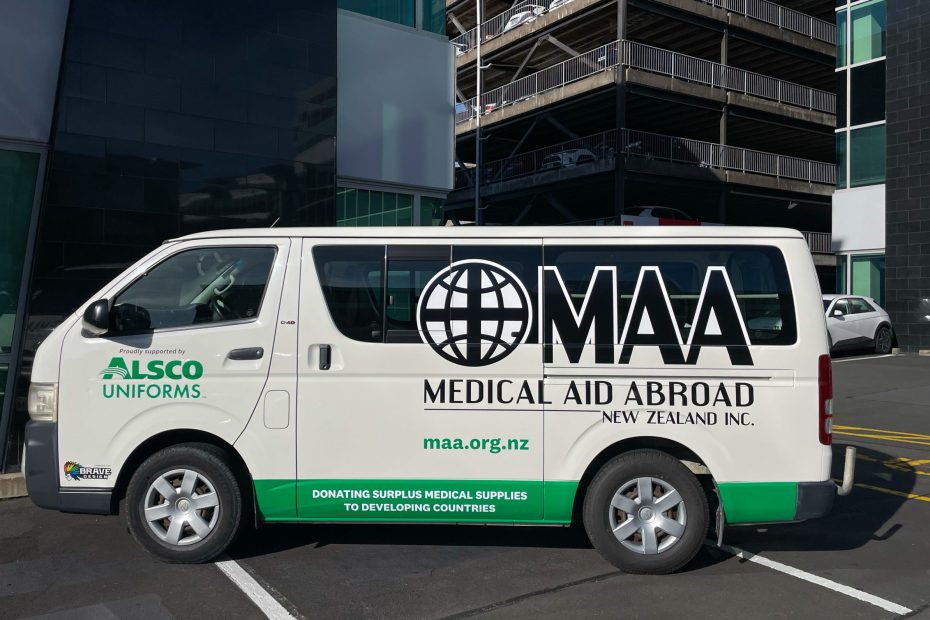The first aid officer or a first aider is the person who holds the certificate in first aid, achieved after taking a course that complies with the standards and requirements provided by the NZQA, including the New Zealand Resuscitation Council and First Aid Guidelines of the Department of Labour.
The role of the first aider in a New Zealand workplace is to administer reasonable amount of treatment in the case of emergency.
They also need to cooperate with the employer (PCBU), be aware of the first aid equipment on sight and the contents of the first aid kits.
First aid kits need to be maintained. Since the first aiders already have a lot on their plate, this is best left to somebody else. Rent your first aid kits from Alsco New Zealand, and you will get regular and careful maintenance and restocking included in your annual flat rate.
What Are the Qualities of a First Aider?
According to the NZQA and their Training Requirements for Quality Provision of Unit Standard-based
First Aid Training, the first aiders need to be able to:
- Assess the situation in a timely manner, identifying dangers to the patient, themselves and everybody present in the workplace. When assessing the situation, they need to come up with ways to deal with the hazard.
Rationale: Placing themselves into risk, the first aiders are actually, indirectly, placing into risk the bystanders and the patient themselves. That is why it is essential that the first aider is capable of quickly assessing the situation and make sure nobody is in imminent danger, including themselves.
- Assess the severity of the illness or injury in order to quickly call 111, briefly and precisely explaining the situation to them. For this to happen the first aiders need to be able to recognise symptoms of potentially lethal states, such as heart failure, stroke and similar. They also need to be able to decide whether the person should be taken to the ER or to the GP.
Rationale: The most important decision that a first aider faces is whether the patient needs urgent medical care, routine care or no medical care at all. That decision determines all the actions that come after this. In case of life-threatening situations like strokes and heart conditions, minutes make the difference between life and death. That is why it is essential that the first aiders know how to make this call.
- Establish the uninterrupted air flow through the airway of an unconscious patient. First aiders should know how to free the airway so that the patient gets good air supply. They should know how to do the head tilt and chin lift. After that, the patient needs to be put into a recovery position which is also something a first aider should be able to do.
Rationale: There are different ways other than head tilt plus the chin lift to open the airways for an unconscious patient. More effective ways are cervical spine immobilisation and jaw thrust, but these skills are considered to be above the level of workplace first aid level. The important thing is for the patient to get the air and this simple procedure is enough in most cases.
- Correctly perform CPR – Cardiopulmonary resuscitation is essential for any first aider. The first aider will already know what is the correct rate of compressions, the depth of those pushes and the place on the chest that needs to be pressured. They should also know how to efficiently and correctly perform the mouth-to-mouth.
Rationale: Timely use of CPR and AED has been shown to increase the chances of survival from the cardiac arrest significantly. For this to happen, the CPR needs to be done correctly. First aiders need to be confident in their CPR skills, because lives very well depend on it.
- Manage bleeding. Bleeding needs to be stopped instantly, in order for the patient to survive. This is done by applying pressure to the appropriate places to stop the blood flow. First aiders need to know how it is done properly.
Rationale: Sudden and extreme blood loss can lead to fatal outcomes in patients, as well as to serious injuries. That is why the first aider needs to be the one who will stop the blood loss until the emergency unit arrives.
- Recognise and deal with common medical emergencies. First aiders need to be able to recognise the symptoms of coronary syndromes, stroke, seizures, breathing difficulties, choking and diabetes emergencies. They also need to know how to help the patient and buy them time until the ambulance arrives.
Rationale: It is essential that the first aiders are capable to identify the life-threatening issues, but to be more focused on the symptoms than the solutions. They need to realise that their emphasis should be on allowing the patient to receive the attention of trained professionals.
- Manage common injuries. Burns, fractures, cuts, eye and head injuries should all be manageable by the first aiders.
Rationale: The workplace injuries are usually light fractures, burns, cuts and the like. Therefore, the treatment of these injuries should be something that a first aider can do anytime.
How Long Does a First Aid Certificate Last?
To be first aiders, your employees need to obtain a certificate first. Once obtained, the certificate is valid for 2 years. After two years, a refresher course needs to be taken.
If two years and three months pass from the moment a first aider took their course, they need to retake the original first aid course.
The courses need to be conducted by an institution which has been approved by the NZQA. The courses should be conducted under the following standards: 6402, 6401 and 6400.
However, there have been some changes, and these standards have been replaced with 26551 and 26552. Since then, there has been one more shift back to the previous set of standards.
How Long Does a First Aid Course Last?
NZQA requires from the institutions that provide the first aid courses to allot the following time:
| Course standard | Teaching and assessment time |
| 6402, 6401 and 6400 | 12 hours |
| 6401 and 6402 or 26551 and 26552 | 8 hours |
| Refresher course | 6 hours |
However, this doesn’t include the breaks in the courses. These are the times that is used for teaching and assessment.
Courses are essential for equipping the first aiders with enough knowledge and skills to save lives and help injured employees. However, if they don’t have the tools and supplies to do so, they will be much less efficient.
Get fully stocked first aid kits from Alsco NZ. Rent them and avoid upfront costs while also ensuring regular and thorough restocking included in the price.
Photo courtesy of Flickr Images by Freepik





